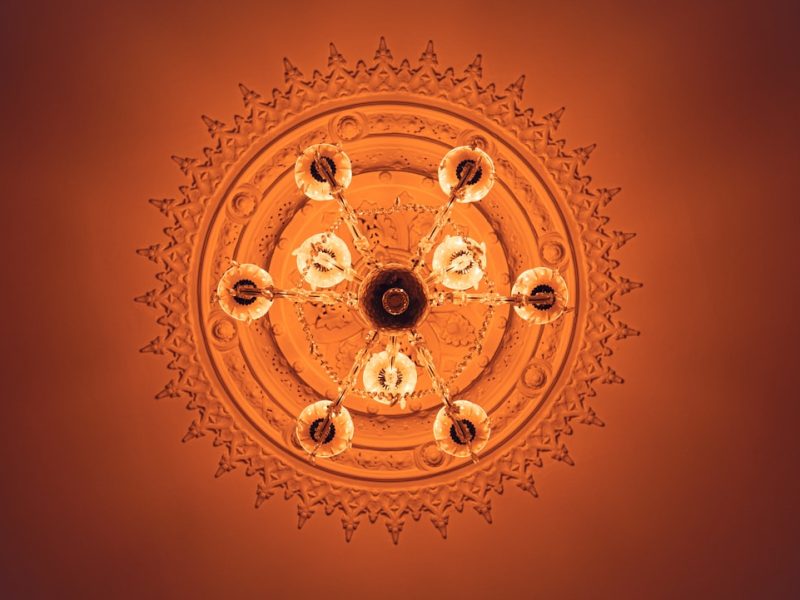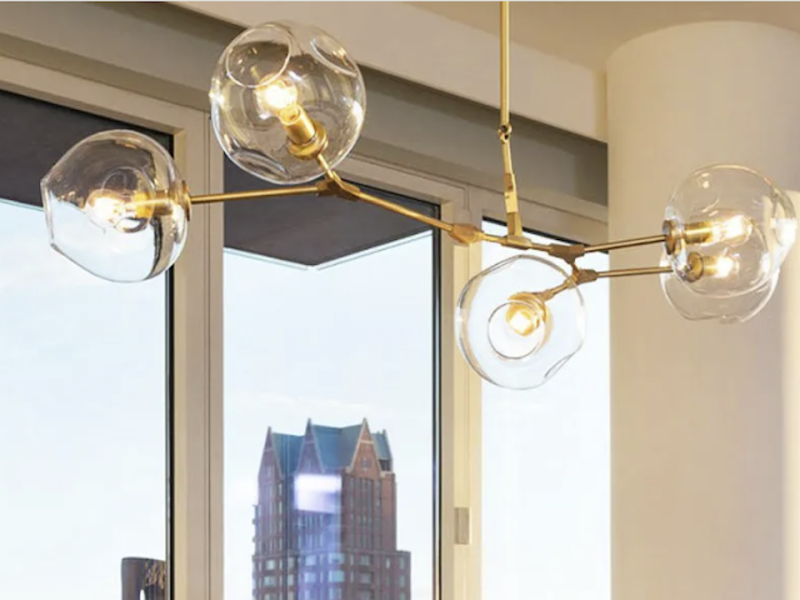Chandeliers have long been a symbol of elegance and luxury. These stunning light fixtures have the power to transform any space, adding a touch of glamour and sophistication. Whether hanging in a grand ballroom or a cozy dining room, chandeliers never fail to make a statement. Their timeless appeal has made them a popular choice for centuries, and their popularity shows no signs of waning.
The impact that chandeliers can bring to a space is undeniable. They not only provide illumination but also serve as a focal point, drawing the eye and commanding attention. The intricate designs and sparkling crystals or glass elements create a sense of opulence and grandeur. Chandeliers have the ability to elevate the overall aesthetic of a room, adding a touch of luxury and elegance that is hard to replicate with any other lighting fixture. Housetonlighting
A Brief History of Chandeliers: From Candles to LEDs
The history of chandeliers dates back centuries, with their origins rooted in the use of candles for lighting. The word “chandelier” itself comes from the French word for candlestick, “chandelle.” In the medieval period, chandeliers were often made of wood or metal and featured multiple arms to hold candles. These early chandeliers were primarily used in churches and castles.
As technology advanced, chandeliers evolved along with it. The introduction of gas lighting in the 18th century led to the development of gas chandeliers, which were more efficient than their candle counterparts. These chandeliers often featured glass shades to protect the flames.
With the invention of electricity in the late 19th century, chandeliers underwent another transformation. Electric chandeliers became more common, and the use of crystal and glass elements became popular due to their ability to refract light and create dazzling effects.
Today, chandeliers have embraced modern technology, with many now featuring LED lights. LED chandeliers offer energy efficiency and a longer lifespan compared to traditional incandescent bulbs. They also allow for more creative designs and lighting effects.
Chandelier Styles: Choosing the Perfect Design for Your Space
Chandeliers come in a wide variety of styles, ranging from traditional to modern. Traditional chandeliers often feature ornate designs with intricate details and crystal or glass elements. These chandeliers are perfect for adding a touch of old-world charm and elegance to a space.
Modern chandeliers, on the other hand, embrace sleek lines and minimalist designs. They often feature metal or glass elements and can be a statement piece in contemporary or industrial-style spaces.
When choosing the right chandelier design for your space, it’s important to consider the size and scale of the room. A large, elaborate chandelier may overwhelm a small space, while a small chandelier may get lost in a large room. It’s also important to consider the height at which the chandelier will be hung. In dining rooms, for example, the bottom of the chandelier should be approximately 30 to 36 inches above the table.
Materials Matter: The Best Materials for Chandelier Construction
The materials used in chandelier construction can greatly impact its overall aesthetic and durability. Crystal is perhaps the most iconic material used in chandeliers, known for its ability to refract light and create dazzling effects. Crystal chandeliers are often associated with luxury and opulence.
Glass is another popular material used in chandeliers. It can be clear or colored, and it offers a wide range of design possibilities. Glass chandeliers can be sleek and modern or ornate and traditional, depending on the style of the fixture.
Metal is also commonly used in chandelier construction. Brass, bronze, and iron are popular choices due to their durability and ability to be molded into intricate designs. Metal chandeliers can range from traditional to industrial in style, depending on the finish and design.
When choosing the right material for your chandelier, it’s important to consider the overall aesthetic of your space and the level of maintenance you are willing to undertake. Crystal chandeliers, for example, may require more frequent cleaning to maintain their sparkle.
Chandelier Lighting: Tips for Choosing the Right Bulbs and Placement
The type of bulbs used in a chandelier can greatly impact its lighting effect. LED bulbs are a popular choice due to their energy efficiency and long lifespan. They also emit less heat, which can help preserve the integrity of delicate materials like crystal or glass.
Incandescent bulbs, on the other hand, offer a warm and inviting glow. They are often used in traditional chandeliers to create a cozy and romantic atmosphere.
When choosing the right bulbs for your chandelier, it’s important to consider the desired lighting effect. Brighter bulbs may be more suitable for task lighting in areas like kitchens or home offices, while softer bulbs may be better suited for ambient lighting in living rooms or bedrooms.
The placement of your chandelier is also crucial in achieving the desired lighting effect. In dining rooms, for example, the chandelier should be centered over the table to provide even illumination. In entryways or foyers, a chandelier can create a dramatic first impression when hung at eye level or slightly above.
Chandelier Installation: DIY or Hire a Professional?

When it comes to installing a chandelier, you have the option of doing it yourself or hiring a professional. Both options have their pros and cons.
DIY installation can save you money and give you a sense of accomplishment. However, it’s important to have some basic electrical knowledge and skills before attempting to install a chandelier yourself. You will need to ensure that you have the necessary tools and equipment, and you should always follow the manufacturer’s instructions.
Hiring a professional, on the other hand, ensures that the installation is done correctly and safely. Electricians have the knowledge and experience to handle electrical wiring and ensure that the chandelier is securely mounted. They can also provide advice on the best placement for your chandelier based on your specific space.
Chandelier Maintenance: Keeping Your Fixture Clean and in Good Condition
Regular maintenance is essential to keep your chandelier looking its best and functioning properly. Dust and dirt can accumulate on the crystals or glass elements, dulling their sparkle. It’s important to clean your chandelier regularly to remove any buildup.
To clean a crystal chandelier, you can use a mixture of mild dish soap and warm water. Gently wipe each crystal with a soft cloth or sponge, being careful not to apply too much pressure. Avoid using harsh chemicals or abrasive materials, as they can damage the crystals.
For glass or metal chandeliers, you can use a glass cleaner or a mixture of vinegar and water. Again, use a soft cloth or sponge to gently wipe away any dirt or grime.
It’s also important to check the wiring and connections of your chandelier regularly to ensure that everything is in good working order. If you notice any loose wires or flickering lights, it’s best to contact a professional for repairs.
Chandeliers in Different Rooms: How to Incorporate Them into Your Home Decor
Chandeliers can be used in a variety of rooms throughout your home to add a touch of elegance and sophistication. In dining rooms, a chandelier can create a focal point above the table, providing both illumination and visual interest. Choose a design that complements your dining room furniture and overall decor style.
In bedrooms, chandeliers can add a touch of luxury and create a romantic atmosphere. Consider placing a small chandelier above the bed or in a seating area to create a cozy and inviting space.
Entryways or foyers are another great place to incorporate a chandelier. A grand, statement-making chandelier can create a dramatic first impression and set the tone for the rest of your home. Consider the height of your ceiling and the size of your space when choosing the right chandelier for your entryway.
Chandeliers in Commercial Spaces: Making a Statement in Restaurants, Hotels, and More
Chandeliers are not limited to residential spaces; they can also make a statement in commercial settings. In restaurants, chandeliers can create a sense of elegance and sophistication, setting the stage for a memorable dining experience. Large, dramatic chandeliers can be hung above dining tables or in the center of the restaurant to create a focal point.
Hotels often use chandeliers in their lobbies or common areas to create a sense of luxury and opulence. A grand chandelier hanging from a high ceiling can make a lasting impression on guests as they enter the hotel.
Event venues also frequently incorporate chandeliers into their decor. Whether it’s a wedding reception or a corporate event, chandeliers can add a touch of glamour and create a memorable ambiance.
The Enduring Beauty and Impact of Chandeliers
In conclusion, chandeliers have an enduring popularity that is rooted in their timeless elegance and impact. From their humble beginnings as candle holders to their modern incarnations with LED lights, chandeliers have evolved over time but have never lost their appeal.
The right chandelier can transform any space, adding a touch of luxury and sophistication. With so many styles, materials, and lighting options to choose from, there is a perfect chandelier for every space and every taste.
Whether you choose to install your chandelier yourself or hire a professional, it’s important to properly maintain it to ensure its longevity. Regular cleaning and maintenance will keep your chandelier looking its best and functioning properly.
Chandeliers are not limited to residential spaces; they can also make a statement in commercial settings. From restaurants to hotels to event venues, chandeliers can create a sense of elegance and luxury that is hard to replicate with any other lighting fixture.
In the end, chandeliers continue to captivate us with their timeless beauty and impact. They are more than just light fixtures; they are works of art that have the power to transform any space into something truly extraordinary.



